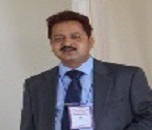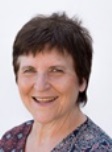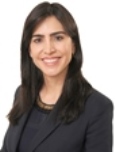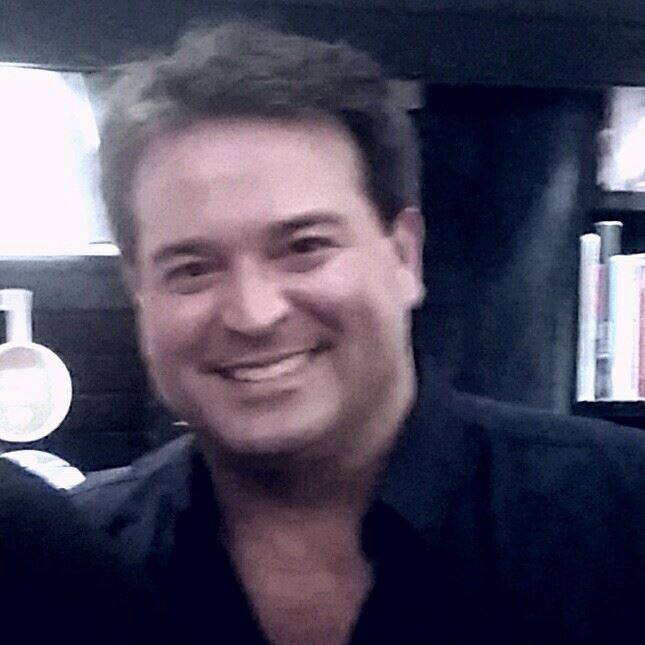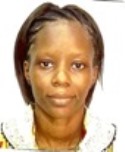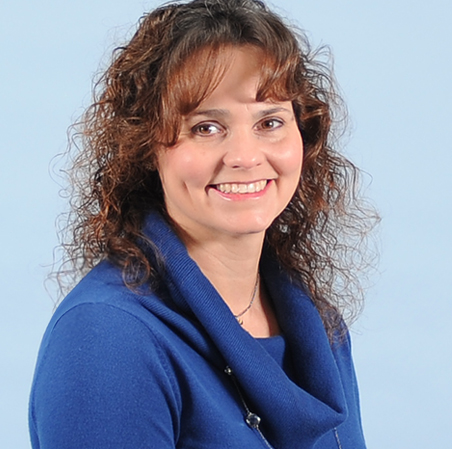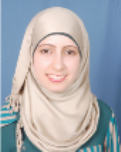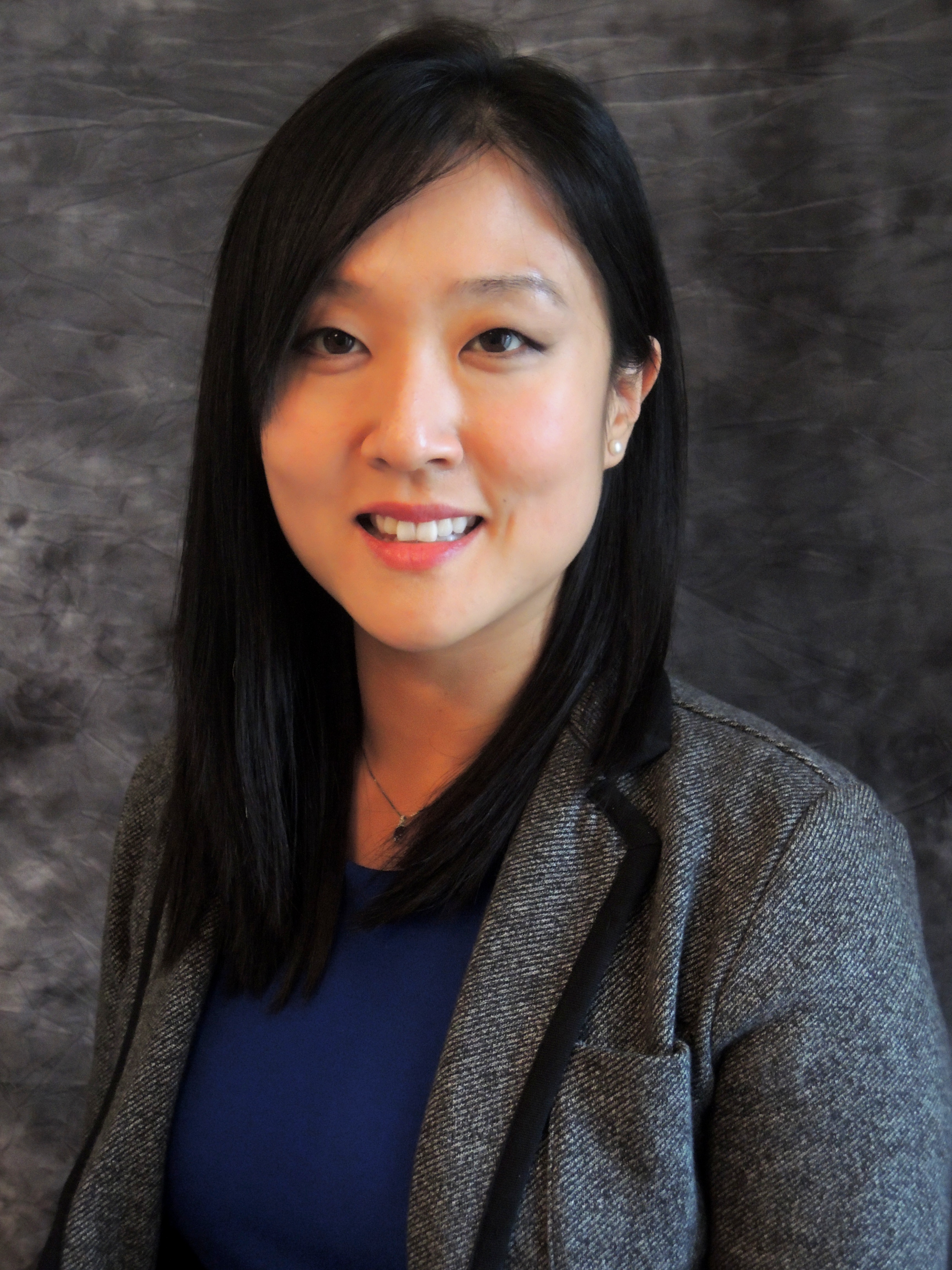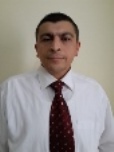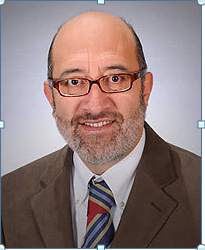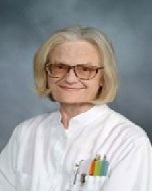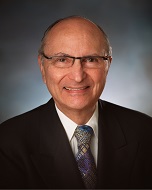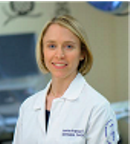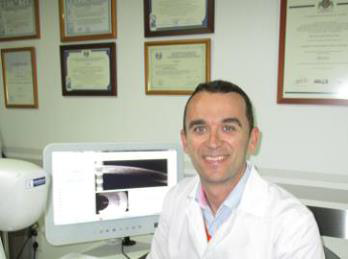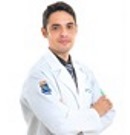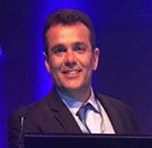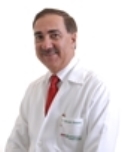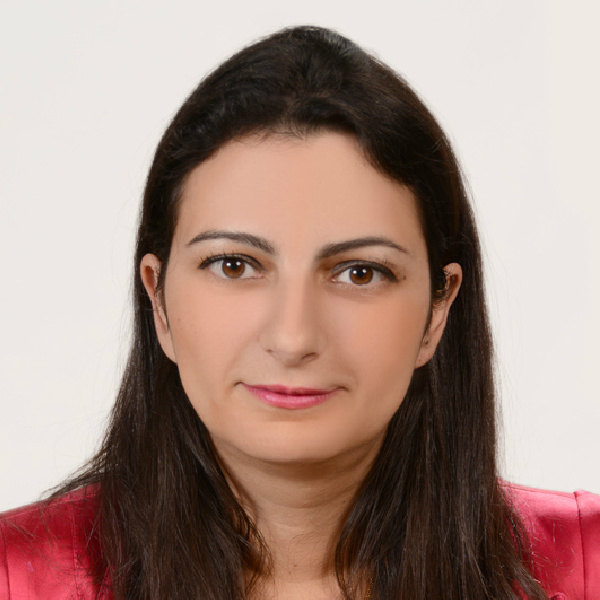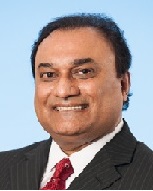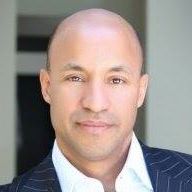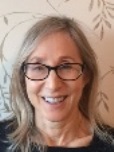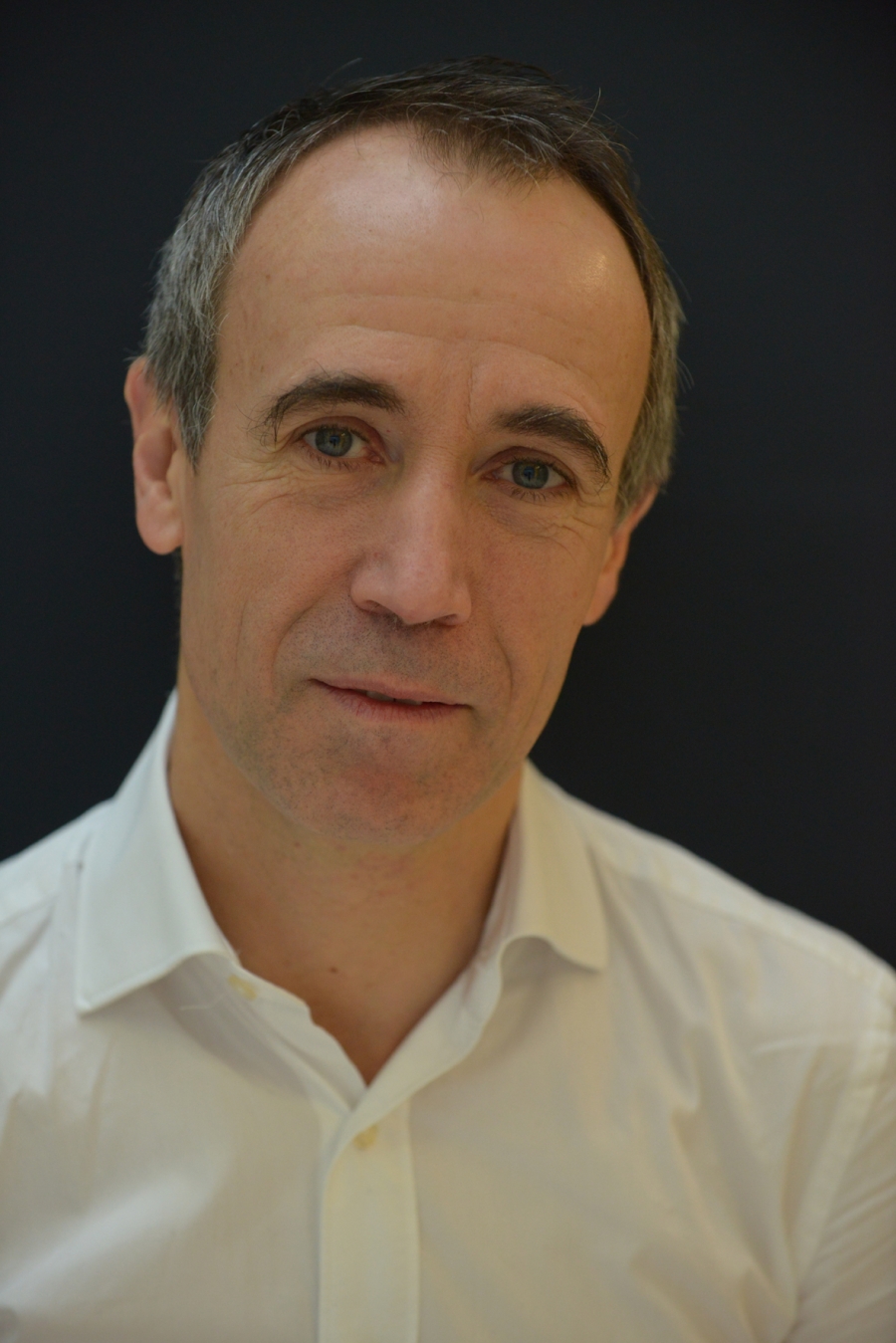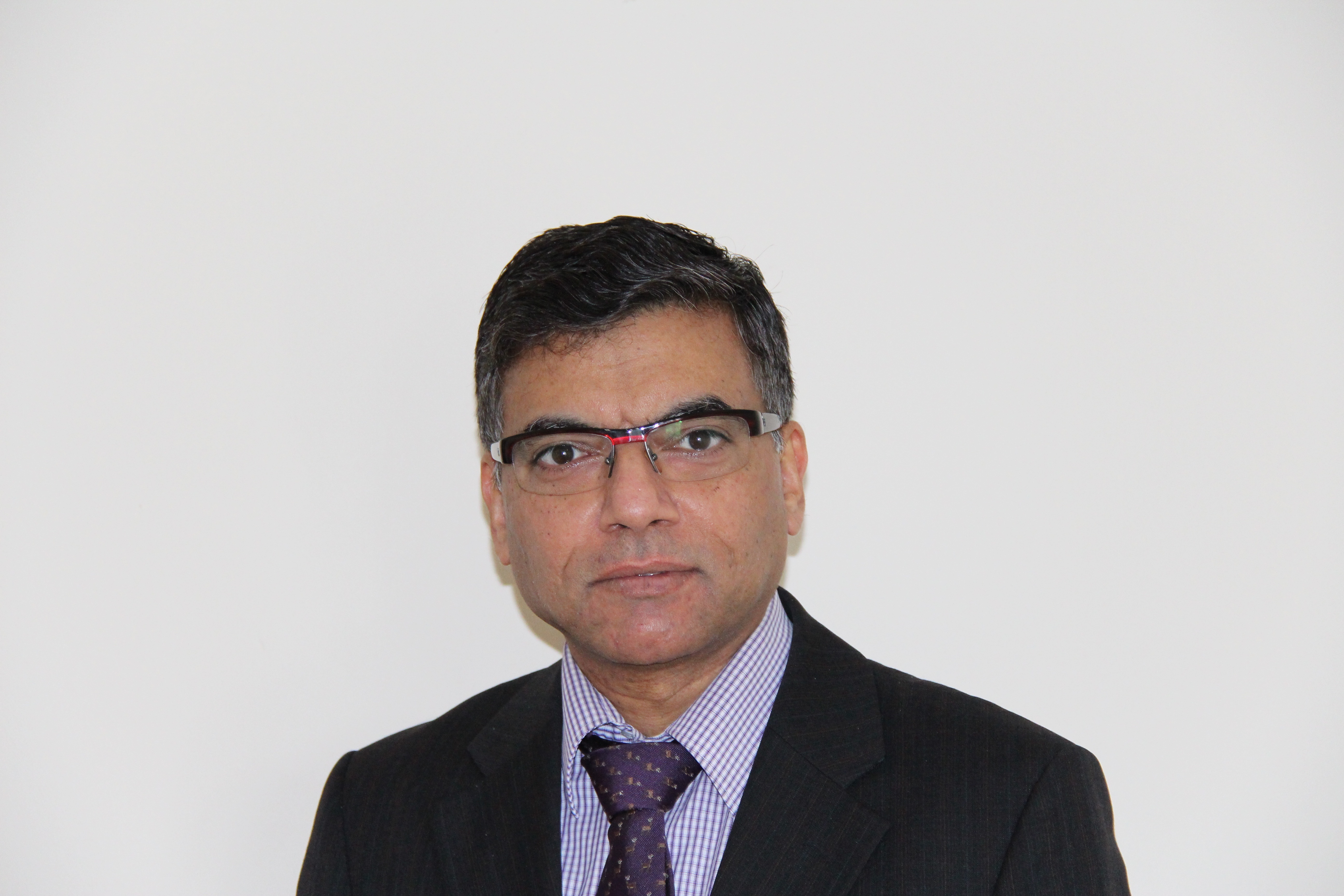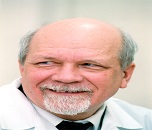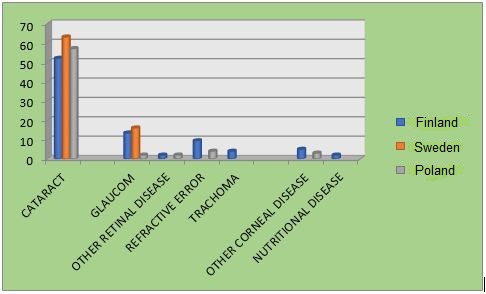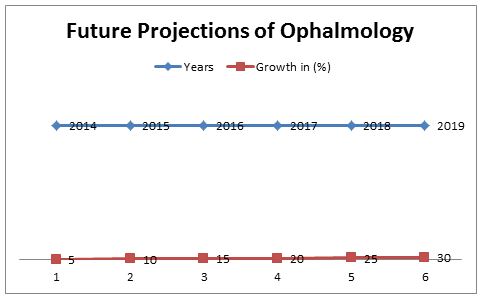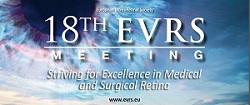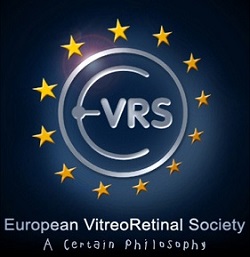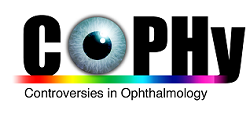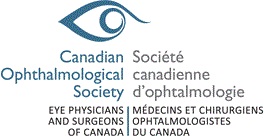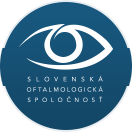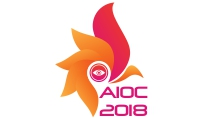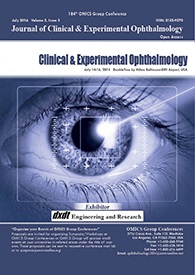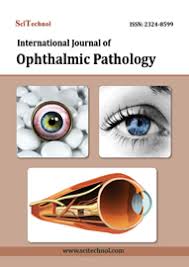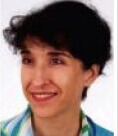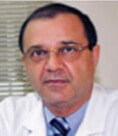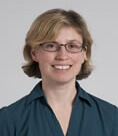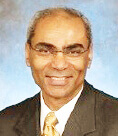Theme: The Science of Eye
Glaucoma 2018
Glaucoma 2018 Scientific Committee takes immense pleasure to welcome you to the 18th Global Ophthalmology, Optometry and Glaucoma Conference to be held during October 18-19, 2018 at Helsinki, Finland in collaboration with European VitreoRetinal Society, Canadian Ophthalmological Society, Academia Ophthalmologica Belgica, America Health Innovations, Dutch Ophthalmic Society, Slovak Ophthalmological Society, The Foundation for the Development of Africa, CoPHy and Sight2Save.
18th Global Ophthalmology, Optometry and Glaucoma Conference will raise the most dynamic and latest issues in the field of Ophthalmology and Optometry. The Congress will highlight the discussion around the theme “The Science of Eye” by bridging the gaps between the intellectuals from across the globe to enlighten their research and findings at Glaucoma 2018. Glaucoma 2018 aims to brief the insights of the following through the various brain storming scientific sessions on the following:
Current Ophthalmic Research Trends, Retina, Cornea and Eye disorders, Ocular Microbiology, Immunology and Oncology, Clinical Ophthalmology and Oculoplastic Surgery, Pediatric Ophthalmology and Neuro Ophthalmology, Ophthalmic Imaging and Instruments, Ophthalmic Drug Delivery, Optometry and Eye Care, Cataract and Refractive Surgery, Glaucoma and Vision Disorders, Treatments and Medications of Glaucoma, Traditional/Herbal Therapeutics in Ophthalmology and many more.
The Conference additionally goes about as a stage to trade data, new mediation and fortify the coordinated effort among Ophthalmologists, Optometrists, Eye Care Specialists, Related Educators and Researchers from both Scholarly World and Ophthalmic Foundations. Meet significant Ophthalmologists, Optometrists, Researchers, Professors and Clinicians from Australia, Dubai, Finland, Hong Kong, Malaysia, UAE, Japan, Germany, Singapore, Saudi Arabia, China, Spain, Thailand, Indonesia, Taiwan, Chicago, UK, Korea, India, USA and many more countries here.
Objective:
Our aim is to provide Oculists, Ophthalmologists, Optometrists, Opticians, Doctors and Professors, Eminent Researchers and students, Schools of medicine, Medicine Associates and Societies, Business Entrepreneurs, Vision analysis Lab Members, Pharmaceutical Industry, Firms producing Medical Devices and anyone professionally involved in study of Ophthalmology with an opportunity to learn about the complexity of disease, discuss interventional procedures, look at new and advanced practices and their efficiency and efficacy in the treatment of various diseases and problems, and understand local realities and practical constraints in improving vision-care. Also, this is an Unique Opportunity for Advertisers and Sponsors to relate them with this International event.
About Organizers:
18th Global Ophthalmology, Optometry and Glaucoma Conference is organized by ME Conferences which is comprised of 3000+ Global Events with over 1000+ Conferences, 1000+ Symposiums and 1000+Workshops on diverse Medical, Pharmaceutical, Clinical, Engineering, Science, Technology, Business and Management field all over the globe.
ME Conferences has an enhanced and highlighted feature of scientific partnerships and alliances with development agencies, Institutes, leading research organizations, non-government organizations, and other entities to promote the development-oriented research across the globe through live streaming, B2B and Scientific Meetings. ME Conferences’s Medical Conferences provides an excellent opportunity for the budding scientists and young researchers through its special initiatives like Young Researcher Forum, Poster Presentation and E-poster (for more information visit ME Conferences).
Target Audience:
- Oculists and Opticians
- Ophthalmologists and Optometrists
- Doctors and Professors
- Eminent Researchers and Scholars
- Schools and Students of Medicine
- Ophthalmology Associates and Societies
- Business Entrepreneurs
- Vision Research Labs
- Software developing companies
- Pharmaceutical Industry
- Firms producing Medical Devices
- Data Management Companies
- Industries associated with Ophthalmologic tools
Why to go?
With individuals from around the globe concentrated on the fact Ophthalmology, Optometry and Glaucoma, this is the absolute best chance to achieve the biggest collection of members from the ophthalmology, optometry group. Lead workshops, disseminate data, meet with present and potential clients, make a sprinkle with another product offering, and get name acknowledgment at this 2 days occasion. Widely acclaimed speakers, the latest strategies, and the most up to date overhauls in field of ophthalmology are signs of this meeting.
Conference Highlights:
-
Clinical Ophthalmology
-
Pediatric Ophthalmology
-
Neuro Ophthalmology
-
Retina, Cornea and Eye disorders
-
Optometry and Eye Care
-
Glaucoma and Vision Disorders
-
Ocular Oncology
-
Ocular Microbiology
-
Ocular Immunology
-
Oculoplastic Surgery
-
Cataract and Refractive Surgery
-
Ophthalmic Imaging and Instruments
-
Ophthalmic Drug Delivery
-
Traditional/Herbal Therapeutics in Ophthalmology
-
Ophthalmic Nursing
-
Current Ophthalmic Research Trends
Conference Opportunities
Ø For Researchers and Faculty Members:
· Speaker Presentations
· Poster Display
· Symposium hosting (4-5 members team)
· Workshop organizing
Ø For Universities, Associations & Societies:
· Association Partnering
· Collaboration proposals
· Academic Partnering
· Group Participation
Ø For Students and Research Scholars:
· Poster Competition (Winner will get Best Poster Award)
· Young Researcher Forum (YRF Award to the best presenter)
· Student Attendee
· Group registrations
Ø For Business Delegates:
· Speaker Presentations
· Symposium hosting
· Book Launch event
· Networking opportunities
· Audience participation
Ø For Product Manufacturers:
· Exhibitor and Vendor booths
· Sponsorships opportunities
· Product launch
· Workshop organizing
· Scientific Partnering
· Marketing and Networking with clients
Advertise Analysis:
Through 2025, the global ophthalmic device market is likely to continue expanding, according to a Research and Markets report.
Here are four points:
1. The report expects the market to total $71.9 billion by 2025, increasing at a compound annual growth rate of 4.8 percent.
2. Markets spurring market expansion include a growing elderly population and more diseases.
3. Technological advancements leading to investment opportunities are also driving growth.
4. Key vendors in the market include:
· Cooper Vision in Pleasanton, Calif.
· Abbott Medical Optics in Santa Ana, Calif.
· Alcon in Fort Worth, Texas
· Bausch & Lomb in Rochester, N.Y.
· Canon in Tokyo, Japan
· Carl Zeiss Meditec in Jena, Germany
· Essilor International in Charenton-le-Pont, France
· HAAG-Streit Group in Köniz, Switzerland
· Hoya Corp. in Tokyo, Japan
· Johnson & Johnson in New Brunswick, N.J.
· Nidek Co. in Aichi, Japan
· Novartis in Basel, Switzerland
· Topcon Corp. in Tokyo, Japan
· Vision Care in Jacksonville, Fla.
· Ziemer Ophthalmic Systems in Switzerland
Track 1. Current Research Trends in Ophthalmology, Optometry and Glaucoma
The novel research in ophthalmology relates to systems, arrangements, headways and structures to achieve the required consistent effect. The novel approach is legitimate to Anti IL-6 treatment, pharmaceuticals in doing battling visual need, translational research for periocular basal cell carcinoma and sebaceous cell carcinoma and updates in relationship of thyroid eye tainting. The novel analysis relates to systems, courses of action, progressions and structures to meet the specified firm impact. Conditions like cornea tissue layer modification and transplantation, choroidal imagination, cornea tissue layer neovascularization can be managed by the use of novel vision modification systems.
Research in ophthalmology and optometry conferences incorporates examinations in zones, as an example, binocular scatters, low vision, visual disorder, geriatrics, pediatrics, and also the impacts of eye related lens system wear. Basic exploration in Vision Science concentrates on such trains as medical science, experimental psychology, neuroscience, visual neurobiology, atomic and cell science, cell film natural chemistry, biostatistics, apply autonomy, contact lenses, spatial route, visual contaminations, refractive improvement, cornea tissue layer surface mapping, infant vision, computational vision, and 3D PC displaying.
Glaucoma is a condition that causes damage to your eye's optic nerve and gets worse over time. Fortunately, several new therapies in glaucoma are finally beginning to move from the laboratory to the clinic for human testing. Some of these are directed at preventing retinal ganglion cell and optic nerve degeneration, called “neuroprotection,” others at regrowing retinal ganglion cell axons down the optic nerve towards the brain, termed “regeneration”, and still others at replacing retinal ganglion cells altogether. Many more topics on current researches are going to be discussed in the light of Ophthalmology and Optometry.
Track 2. Retina, Cornea and Eye Disorders
The retina is a thin layer of tissue on the inside back wall of eye. It contains millions of light-sensitive cells and other nerve cells that receive and organize visual information. Retina sends this information to brain through optic nerve, enabling one to see. The main area of retina contains a high density of color-sensitive photoreceptor cells called cones which are responsible for color vision and hence any defect and alteration in the main area of the retina will lead to Color vision defects.
Eye consists of terribly sensitive and fragile tissues and each part of this serves its own function to keep up its general vision. The cornea is the front part of the eye which is transparent and covers the iris, pupil, and anterior chamber. The cornea, with the anterior chamber and lens, refracts light, accounting for roughly two-third portions of the eye's total optical power.
There are many disorders associated with eye, principally with retina and cornea. These includes Acanthamoeba Keratitis, Amblyopia, Astigmatism, Bell's Palsy, Bionic Eye Impulse, Blepharitis, Blurry Vision, Chalazion, CMV Retinitis, Conjunctivitis (Pink Eye), Corneal Abrasion (Scratched Eye), Corneal Collagen Crosslinking, Corneal Ulcer, Detached Retina, Diabetic Retinopathy, Double Vision (Diplopia), Dry Eye Infographic, Eye Herpes, Eye Occlusions (Eye Strokes), Fuchs' Corneal Dystrophy, Glaucoma, Hyperopia (Farsightedness), Hyphema, Keratoconus, Macular Dystrophy, Macular Hole, Meibomian Gland Dysfunction, Milia (Eyelid Cysts), Myopia (Nearsightedness), Nystagmus, Ocular Hypertension, Ocular Migraine, Ocular Rosacea, Optic Neuritis and Optic Neuropathy, Photophobia (Light Sensitivity), Pterygium, Ptosis (Drooping Eyelid) etc. Glaucoma conferences will concentrate on those most recent also energizing innovations altogether those territories about eye disorders.
Track 3. Ocular Microbiology, Immunology and Oncology
Microorganisms such as bacteria, virus, fungi, parasites can enter the human body and are capable enough to spread to attack the interior surface of an eye thus spreading the infection. The interior of the eye lacks lymph vessels but is highly vascularized, and many immune cells reside in the uvea, mostly macrophages, dendritic cells, and mast cells. These cells fight off intraocular infections, and intraocular inflammation can manifest as uveitis (including iritis) or retinitis. The cornea of the eye is immunologically a very special tissue as it is vulnerable to a wide range of microorganisms while its moist mucosal surface makes the cornea particularly susceptible to attack. It additionally provides a big portion of the eye’s refractive power, which means it should not only keep remarkable transparency, but must also work as a barrier to stay away from pathogens as they cannot reach at the rest of the eye.
Ocular oncology is a multidisciplinary service which provides the information about eye malignancy by the general oncologists, pediatric oncologists, specialist nurses, clinical scientists and plenty of others. The most common malignancies include uveal and conjunctival melanoma, uveal metastasis, intraocular and conjunctival lymphoma and conjunctival carcinoma. The commonest cancer of eye occurs in kids which is known as ‘Retinoblastoma’. The second most common intra-ocular malignancy is Choroidal Melanoma occurs among adults. ocular oncologists receive an oversized range of referrals of patients with suspected malignant tumors. Diagnosis relies on biomicroscopy, angiography, optical coherence tomography, ultrasonography, biopsy and autofluorescence imaging. The most common benign tumors include naevi, chorodal haemangiomas, vasoproliferative tumours, and retinal haemangioblastomas. Many of these lesions require treatment and/or long-term surveillance.
Track 4. Clinical Ophthalmology and Oculoplastic Surgery
The eye is a delicate organ, and requires extraordinary care some time recently, amid, and after a surgical methodology. Clinical Ophthalmology improves idea into normal visual illnesses, ophthalmic surgical and laser methodology, clinical life structures and visual therapeutics. Patients with eye diseases get examined by ophthalmologists and optometrists. Clinical or Surgical Ophthalmology is a sub-specialty of Ophthalmology, where surgeries like cataract surgery and laser eye surgery are done. Oculoplastic surgery involves the organization of the eyelids, tear channels and re-gainful surgery. Refractive surgery is a process where progression of the vision is done. The most performed kind of refractive surgery is LASIK (Laser-Assisted In Situ Keratomileusis), where the cornea tissue layer is reshaped employing a optical laser therapy. Glaucoma surgery may be a laser or non-laser, is the procedure for achieving main results like decreasing the production of intraocular fluid (aqueous humor) or increasing the drainage of this same fluid. Visual surgery or Ophthalmic surgery is the surgery performed on the adnexa, frequently by an associate specialist.
Eye surgery is a much common and easy way to recover any eye disease because the surgery does not give any pain. It can be treated with ultrasound, B-scan ultrasonography, Magnetic resonance imaging etc. Intraocular Lens Implantation (IOL) is a lens implanted in the eye used to treat Cataracts or Astigmatism. Main types are Toric IOLs, Monovision with Intraocular Lenses, Aspheric IOLs, Blue Light-Filtering IOLs, Light-Adjustable Lenses (LALs), "Piggyback" IOLs. Main methodologies of eye surgery for cataract include Phacoemulsification, Manual small incision cataract surgery (MSICS), Extra capsular cataract extraction (ECCE), Intracapsular cataract extraction (ICCE), Cryoextraction, Use of Intra ocular antibiotics to prevent infection in cataract surgeries. Other surgical procedures include Wavefront LASIK, LASEK (laser epithelial keratomileusis), PRK (photorefractive keratectomy), AK or RLI (astigmatic keratotomy) and RK (radial keratotomy), CK (conductive keratoplasty), Intact corneal rings, RLE (refractive lens exchange) and PRELEX (presbyopic lens exchange) and EpiLasik.
Track 5. Pediatric Ophthalmology and Neuro Ophthalmology
Pediatric ophthalmology is a specialization of eye maladies, visual advancement and vision mind in children which is a sub-claim to fame of ophthalmology. Pediatric Ophthalmology conjointly focuses on problems which have an effect on the pediatric vision likewise pediatric uveitis, developmental abnormalities, genetic eye diseases and more. It is a vision development disorder which is also known as lazy eye. Amblyopia is an eye problem which emerges in kids can also be present in adults. Children with obvious vision problems, head turns, head tilts, squinting of the eyes, or preferred head postures (torticollis) are typically referred to a pediatric ophthalmologist for evaluation. Pediatric ophthalmologists generally manage adults with eye movement disorders (like strabismus or nystagmus) also due to their common issues with strabismus conditions.
Neuro-ophthalmology includes the merging field of neurology and ophthalmology, oftentimes managing complex complicated problems associated with the visual framework. The visual impairments caused by run-down of the retrochiasmatic visual pathways by injury to the anterior visual pathways or any major ocular disorder is known as Cerebral Visual Impairment (CVI). Another disease caused by a breakdown at intervals between nerves and muscles that ends up in visual defect called diplopia, drooping eyelids and muscles weakness is called as Myasthenia gravis which gives impact on the both vision and neuromuscular activity. Besides, the involuntary eye movement (nystagmus) which is gained in infancy or later in life may result in reduced or restricted vision. Factors like cerebral macular degeneration and chronic progressive external ophthalmoplegia also the major effecting part of neuro-ophthalmology. Demonstrative instruments in Neuro-ophthalmology are utilized to explore and to treat the different state of Neuro-ophthalmology as Neonatal visual examination are basically performed to screen the vicinity and movement of Retinopathy of Prematurity.
Track 6. Ophthalmic Imaging and Instruments
Ophthalmic imaging can be extremely specialized kind of medical imaging dedicated to the study and treatment of disorders of vision science. It covers an immense extent of photographic administrations, various specialists and organizations that combining numerous kinds of business and medicinal photography.
International Markets (HLC083B) from BCC Analysis, the worldwide business sector was valued at regarding $16.9 billion in 2012, up from concerning $15.3 billion in 2010 (As indicated by Ophthalmic Medical Devices, Diagnostics, and Surgical Equipment). It was a necessity of the business sector to reach $20.2 billion in 2017, a growth of virtually $3.4 billion between the estimate amount of time and a yearly development rate (CAGR) of 3.7% from 2012 to 2017 at a compound rate. Key markets in Asia Pacific incorporate Australia and India, where contact lens markets are entrenched. Open doors for development stay in several districts and the lion's share of Eastern Australia. By 2017, the Australian contact lens business sector is anticipated to reach $2.8 billion, developing at a rate of 3% every year.
Tonometer, Perimeter, Optical Coherence Tomography (OCT), Fundus Fluorescein Angiography (FFA), Direct and Indirect ophthalmoscopy, OCT Angiograghy, Color fundus (retinal) photography (CFP), Fundus Auto Fluorescence (FAF), Rigid gas permeable (RGP), Phoropter, RPS InflammaDry, TearScan MicroAssay, Meibography Plus, Autorefractors, Vision testers, Digital pd meters, Corneal topographers, Lensometers, Keratometers are some instruments and methods used in ophthalmology.
Track 7. Novel Approaches for Ophthalmic Drug Delivery
Visual medical speciality in Pharmacology and medicine is the principle multidisciplinary supplying crucial and basic clinical research about biopharmaceuticals and different techniques which can possibly treat, anticipate, and/or analyze visual maladies and disarranges. Some of the breakthrough in ophthalmic research and advance drug delivery system can be Punctal Plugs, Ocular Therapeutics, Mati therapeutics (QLT) and gel-forming drops to widen the therapeutic effect of a specific drug. Topical combination of corticosteroid & anti-infective agents, Drugs used in the treatment of allergic conjunctivitis, Oral & topical nonsteroidal anti-inflammatory agents (NSAIDs) and Retinoblastoma chemotherapy are few developed formulations to treat ophthalmic diseases. The use of drug-loaded contact lenses and ocular inserts allows drugs to be better placed where they are needed for more direct delivery. Developments in ocular implants provides a method to beat the physical barriers that conventionally prevented efficacious treatment. Implant technologies area are beneath development permitting everlasting drug delivery from one procedure, these devices permitted posterior chamber diseases to be completely treated. Future developments might come with artificial corneas to abolish the necessity for donor tissue and occurrence of implantable drug depots remaining the patient's duration of life. Drugs, that are used, are the types of Phenylephrine, Cyclopentolate, Antihistamines and Decongestants.
Allergan, Pfizer, Bausch + Lomb, Merck & Co. and Regeneron like companies are vigorously involving in ophthalmic research and drug development. According to Visiongain (Ophthalmic Drugs: World Market Prospects - 2013-2023; October 2013), the worldwide ophthalmic market was $17.5 billion in 2011 and is expected to grow to $34.7 billion by 2023, representing a 5.9% compounded annual growth rate.
Track 8. Optometry and Eye Care
Optometry is nothing but the profession of inspecting the eyes for imperfection in vision and eye disorders by means of worthy appliances or instruments in order to recommend corrective lenses or other proper treatment.
Special instruments are used by the Doctors of optometry to assess defects in eye and recommend contact lenses or eyeglasses to improve deficiencies. Minor surgeries can also be performed to eliminate foreign bodies from an eye and they also suggest exercises to boost the eyes work.
Patients are also referred to medical doctors and specialists by an optometrist for other injuries or diseases that eventually damage vision. The doctor evaluates the patient’s peripheral vision and observes at the structure of the retina during a clinical optometry examination. Astigmatism can be diagnosed then by them which might be caused by deflection of the retina and they prescribe corrective lenses to upgrade vision. The doctor can typically counsel the patients if they prefer contact lenses on their use to stave off infection.
Track 9. Cataract and Refractive Surgery
A cataract, that lies behind the iris and the pupil, is a clouding of the eye's natural lens. The most prevalent cause of vision loss in people over age 40 is cataract and this is the main cause of blindness in the earth. Surprisingly, more cataract cases are there than glaucoma, diabetic retinopathy and macular degeneration combined in worldwide, according to Prevent Blindness America (PBA). There are more than 22 million Americans having cataract today at age 40 and older. PBA says that more than 30 million Americans are supposed to have cataracts by the year 2020.
Surgical procedures which cure common eyesight problems (astigmatism, presbyopia, nearsightedness and farsightedness) to diminish the dependency on prescribed eyeglasses and/or contact lenses are known as Refractive surgery. LASIK (laser-assisted in situ keratomileusis) is the most common surgery now a day where a laser is used to reshape the cornea. But there are also other laser procedures and intraocular lens procedures to correct the vision by reshaping the cornea or clear, round dome at the front portion of the eye. Implanting a lens inside the eye may be another procedure to correct the vision.
Track 10. Glaucoma and Vision Disorders
Glaucoma, called as the silent thief of sight, is an eye disease that is often associated with elevated intraocular pressure, in which damage to the eye (optic) nerve can lead to loss of vision and even blindness. Intraocular pressure increases when either too much fluid is produced in the eye or the drainage or outflow channels (trabecular meshwork) of the eye become blocked.
The accurate causes of optic nerve damage, which comes from glaucoma, includes mechanical compression and/or attenuate blood flow of the optic nerve. Visual information is carried by this optic nerve from the eye to the brain, which is the part of the central nervous system. The nerve fiber extensions of the retinal ganglion cells have made axons and this cranial nerve is built over one million nerve axons. The optic nerve becomes damaged when the eye pressure is increased, and/or other stimulating factors exist there and a process namely Apoptosis happens where the retinal ganglion cells undergo a leisurely procedure of cell death. The death of the retinal cells and degeneration of the nerve fibers results in permanent vision loss.
In addition to eye problems, secondary systemic (body) symptoms may occur. These secondary symptoms are especially common with acute glaucoma. Examples include irritability, loss of appetite, and vomiting.
Track 11. Treatments and Medications of Glaucoma
Glaucoma treatment is based on the nature and severity of each case. Normally it cannot be cured, however it can be managed. Pills, laser procedures, eye drops and surgical operations are used to stop or control further harm from occurring. Regular eye examinations are much important to recognize progression and to stop vision loss. As glaucoma can get at worst without being aware of it, to achieve a lower "target eye pressure", treatment will probably need to be changed at time to time.
Several innovative approaches to glaucoma surgery show promise for better safety. As with all new procedures, time and much follow-up study are required to see which ones will remain useful for helping glaucoma patients long-term.
Glaucoma is usually treated with eye drops taken often many times each day, whenever needed in combination with pills. Circulation of eye fluid can be altered, and eye pressure can be lowered by these medications, either by increasing the flow leaving the drainage angle, or by decreasing the production of fluid within the eye.
Several medications are currently in use to treat glaucoma. Eye drops used in managing glaucoma decrease eye pressure by helping the eye’s fluid to drain better and/or decreasing the amount of fluid made by the eye. Drugs to treat glaucoma are arranged by their dynamic fixing. These include: prostaglandin analogs, beta blockers, alpha agonists, and carbonic anhydrase inhibitors. Blend drugs are accessible for patients who require more than one sort of prescription.
Track 12. Traditional/Herbal Therapeutics in Ophthalmology
Globalization and cross movement of people across countries have led to adoption of traditional health practices, once indigenous to a sect of population or country, by other populations outside its indigenous culture. If utilized properly, traditional medicine and health practices can be a source of income as has already been described in countries like India and China, where traditional health practices have evolved and developed over the years and are accepted the world over as established modes of alternative therapies. By the report “Traditional Medicine in Oman: Its Role in Ophthalmology”, three patients who were examined in the Ophthalmic department of a tertiary care teaching hospital in the Sultanate of Oman between 2003 and 2004, have been cured fully or partially.
Also, the traditional medicinal systems of various civilizations are well known to use herbal remedies for various ocular conditions. Plant derived compounds came to ocular use in the last century in which cocaine, physostigmine, pilocarpine and atropine are still holding a place in modern ophthalmology practice. The traditional knowledge available at different populations are of current interest among researchers throughout the world for finding new therapeutic modalities for ocular disorders like glaucoma, uveitis, cataract and neovascular conditions etc.
Glaucoma 2018 market research:
After a huge downfall of the market during economic drain in 2008-2009, ophthalmology market is catching up to get back to the normal as there is a rapid growth in population resulting in increased number of patients with eye diseases and the incidence of cataract and glaucoma are increasing every year.
According to a study it is estimated that around 48% of world population is blind because of cataract and more than 60 million people suffer from glaucoma and it is estimated that the number would rise to 80 million by the end of 2020. Ageing population is the leading cause for refractive error problem in countries like the USA and Europe, it is noticed that the refractive error problem is mostly seen in population ageing more than 40 years.
Importance and scope:
The research report categorizes the global ophthalmology drugs and devices market into diagnostic devices, surgical devices, vision care and drugs. All these markets are broken down into segments and sub-segments, providing exhaustive value analysis for 2010, 2011 and 2012, as well as forecast up to 2017. Each of the devices market is comprehensively analyzed at a granular level by geography (North America, Europe, Asia, and Rest of the World) to provide in-depth information on the global scenario. However, the drugs market is analyzed in the U.S., Europe, Japan, Asia, and Rest of the world.
Glaucoma 2018 enhances ophthalmic education to improve eye care to contribute to preservation and restoration of vision around the world in collaboration with European VitreoRetinal Society and Sight2Save.
Ophthalmology continues to be an attractive field of health and medicine with great opportunities.
According to WHO:
- 285 million people are estimated to be visually impaired worldwide: 39 million are blind and 246 have low vision.
- About 90% of the world’s visually impaired live in low-income settings.
- 82% of people living with blindness are aged 50 and above.
- Globally, uncorrected refractive errors are the main cause of moderate and severe visual impairment; cataracts remain the leading cause of blindness in middle- and low-income countries.
- The number of people visually impaired from infectious diseases has reduced in the last 20 years according to global estimates work.
- 80% of all visual impairment can be prevented or cured.
- Cataract removal is the most commonly performed ophthalmic surgical operation.
Why Helsinki, Finland?
Helsinki, the capital and largest city of Finland, is a vibrant seaside city of beautiful islands and great green parks as well as lakes and forests. Design, architecture, culture and shopping are all great exploration angles and large park areas, and the coastline with numerous islands sprinkled off it make certain that there’s no shortage of natural presence. Adding a spice, there’s something going on in Helsinki every day of the year. One cannot forget the natural enchanting beauty of the “Aurora Borealis” and the “Midnight Sun’.
Established by King Gustav I of Sweden as a trading town in 1550, Helsinki has a population density reaching 16,494 inhabitants per square kilometer. The archipelago of Helsinki consists of around 330 islands, providing beautiful set-ups for days at the beach or weekend camping trips. The fortress of Suomenlinna is a UNESCO World Heritage Site and one of Finland’s most popular sights. There are two large national parks named Sipoonkorpi and Nuuksio. As the snow falls, the idyllic summer town is replaced with something completely different with the activities from skiing to swimming in the frozen sea. The eastern end of Helsinki, particularly the densely inhabited Kallio has sparked to life in recent years. Another cool place to look out for is Punavuori in the center of town. Both are home to the most inspirational array of bars, vintage shops, boutiques, galleries and more. Porvoo is most famous for its charming old town that dates back to the middle ages and is filled with adorable cafés, restaurants and handicraft boutiques. Beautiful manors, museums, churches and chapels also characterize Porvoo.
Helsinki, which is also known as the “Daughter of Baltic” is a city easy to navigate as it is a compact city which can be easily explored on foot. This is where sightseers will find the country's finest architectural masterpiece from historical eras, museums and art galleries, parks, zoo, church (Temppeliaukio, Cathedral Uspenski, and Helsinki Cattedrale), Fortress, amusement park, restaurants and shopping. Influenced by Classicism and modernized by Functionalism, Helsinki is possibly best known for its Art Nouveau architecture. In 2009, The International Council of Societies of Industrial Design chose Helsinki as the World Design Capital for 2012.
Helsinki has something to offer a very broad market of visitors from young back-packers right through to the super rich and stipulated as the perfect vision for 18th Global Ophthalmology, Optometry and Glaucoma Conference 2018.
The European countries are considered by some as the most successful regional association in the developing world. In 2011, European countries amounted for 3.11% of global GDP and had 8.59% of global population. Today, Finland has nearly 10,000 eye care centers including hospitals and optical shops combined. Finnish ophthalmologists can earn anywhere from US$8,400 to US$180,000 annually.
Conference Highlights:
- Clinical Ophthalmology
- Pediatric Ophthalmology
- Neuro Ophthalmology
- Retina, Cornea and Eye disorders
- Optometry and Eye Care
- Glaucoma and Vision Disorders
- Ocular Oncology
- Ocular Microbiology
- Ocular Immunology
- Oculoplastic Surgery
- Cataract and Refractive Surgery
- Ophthalmic Imaging and Instruments
- Ophthalmic Drug Delivery
- Traditional/Herbal Therapeutics in Ophthalmology
- Ophthalmic Nursing
- Current Ophthalmic Research Trends
Top Audience at Ophthalmology Conferences
- Oculists and Opticians
- Ophthalmologists and Optometrists
- Doctors and Professors
- Eminent Researchers and Scholars
- Schools and Students of Medicine
- Ophthalmology Associates and Societies
- Business Entrepreneurs
- Vision Research Labs
- Software developing companies
- Pharmaceutical Industry
- Firms producing Medical Devices
- Data Management Companies
- Industries associated with Ophthalmologic tools
At 5.5 million, Finland's population is worth of 16,494 inhabitants somewhere per square kilometer. So as in other countries, there is tremendous demand for ophthalmic care. Unfortunately, there are just 571 ophthalmologists in Finland, or less than one for every 9,600 people.

Figure 1: Comparison of no. of ophthalmologists in Helsinki, Finland and Worldwide
Major hospitals associated with ophthalmology around the World:
- Singapore National Eye Centre (Singapore)
- Moorfields Eye Hospital (London, UK)
- The Rotterdam Eye Hospital (Rotterdam, The Netherlands)
- Tun Hussein On National Eye Hospital (Kuala Lumpur, Malaysia)
- Royal Victorian Eye and Ear Hospital (Melbourne, Australia)
- Rutnin Eye Hospital (Bangkok, Thailand)
- St. Erik Eye Hospital (Stockholm, Sweden)
- The Royal Victoria Eye and Ear Hospital (Dublin, Ireland)
- Jakarta Eye Center (Jakarta, Indonesia)
- Johns Hopkins School of Medicine
- Bascom Palmer Eye Institute
- LV Prasad Eye Institute (India)
- Tianjin Medical University Eye Hospital (Tianjin, China)
- Sydney Eye Hospital (Sydney, Australia)
- Kim’s Eye Hospital (Seoul, South Korea)
- St. John of Jerusalem Eye Hospital
- Kellogg Eye Center (Ann Arbor, USA)
- Fondation Asile des Aveugles (Lausanne, Switzerland)
- The Metta Eye Hospital (Bangkok – Thailand)
- Ispahani Islamia Eye Institute & Hospital (Bangladesh)
- Bascom Palmer Eye Institute (USA)
- Massachusetts Eye and Ear Infirmary (USA)
- Phillips Eye Institute (USA)
- Wilmer Eye Institute at Johns Hopkins (USA)
- Emory Eye Center (USA)
- New York Eye and Ear Infirmary (USA)
- Wills Eye Hospital (USA)
- Turin Ophthalmic Hospital (Italy)
- Hoftalon Eye Hospital (Brasil)
- Eye & Ent Hospital Fudan University (China)
- The Beijing TONGREN Hospital (China)
- The Niteroi Eye Hospital (Brasil)
- The Xi'an Eye Hospital (China)
Major hospitals associated with ophthalmology in Europe Region:
- Rutnin Eye Hospital
- St. Erik Eye Hospital
- The Royal Victoria Eye and Ear Hospital
- Tokuda Hospital
- Wellington Eye Clinic Dublin
- Eye and Dental Clinic
- iLASER - EYE SURGERY INSTITUTE
- Biomedica International SRL
- Dr. Vryghem Clnic
- The Stratford Clinic
- Hospital Particular do Algarve
- Mediterranean Health Care
- St. Francis Private Hospital
- New Vision
Major hospitals associated with ophthalmology in Finland:
- Finland Eye Center
- Helsinki University Hospital
- Eira Hospital and Medical Centre
- Turku University Hospital
- Eye and Ear Hospital
- South Karelia Central Hospital
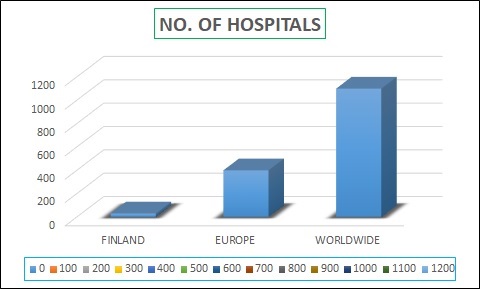
Figure 2: Comparison of no. of ophthalmology hospitals in Finland, Europe region and Worldwide
Major societies associated with ophthalmology worldwide:
- International Council of Ophthalmology
- American Academy of Ophthalmology (AAO)
- The American Ophthalmological Society (AOS)
- American Association for Paediatric Ophthalmology
- Association for Research in Vision and Ophthalmology(ARVO)
- British Isles Paediatric Ophthalmology and Strabismus Association
- Asia Pacific Glaucoma Society
- Connecticut Society of Eye Physicians (CSEP)
- Florida Society of Ophthalmology (FSO)
- Houston Ophthalmological Society (HOS)
- Illinois Society of Eye Physicians and Surgeons (ISEPS)
- Iowa Academy of Ophthalmology (IAO)
- Afro-Asian Council of Ophthalmology
- Vision Sciences Society (VSS)
- Human Vision and Electronic Imaging (HVEI)
- All-Russian Association of Ophthalmologists
- Arab Board of Ophthalmology
- Michigan Ophthalmic Personnel Society (MOPS)
- Minnesota Academy of Ophthalmology (MAO)
- New England Ophthalmological Society (NEOS)
- Asia Pacific Association of Cataract & Refractive Surgeons
- New Orleans Academy of Ophthalmology (NOAO)
- Image Perception in Medical Imaging
- Asia Pacific Glaucoma Society
- Asia Pacific Society of Ocular Oncology & Pathology (APSOOP)
- Eye Tracking Research & Applications (ETRA)
- Association of Ophthalmologists of Latvia
- German Ophthalmological Society (DOG)
- Belgian Society of Cataract and Refractive Surgery (BSCRS)
- Scottish Vision Group and Applied Vision Association (AVA)
Major societies associated with ophthalmology in Europe:
- European Society of Ophthalmology (SOE)
- European Neuro-Ophthalmology Society
- European Pediatric Ophthalmological Society (EPOS)
- European Society of Cataract & Refractive Surgeons (ESCRS)
- The European Board of Ophthalmology (EBO)
- European Society of Veterinary Ophthalmology (ESVO)
- European School of Advanced Studies in Ophthalmology (ESASO)
- European Society of Retina Specialists (EURETINA)
- European Association for Vision and Eye Research (EVER)
- European Contact Lens Society of Ophthalmologists
- European Eye Bank Association
- European Ophthalmic Pathology Society (EOPS)
- European Pediatric Ophthalmological Society
- European Society of Ophthalmic Plastic and Reconstructive Surgery
- European Strabismological Association
Major societies associated with ophthalmology in Finland:
- Finnish Association of Vision and Eyecare (NÄE ry) - The NÄE ry is a visionary and eye care specialist organization. It is the joint industry organization of leading optical chains, individual opticians, eye clinic companies and all of its suppliers, wholesalers and equipment suppliers. The association was founded in spring 2016 when eye care clinics Medilaser, Memira and Eye Center Eye Clinic decided to join the operations of the then Finnish Optical Industry Association. The predecessor of NÄE ry The Finnish Optical Industry (SOT) saw daylight in 2012 when the Finnish Optical Trade Union, Finland's Optical Industry Wholesalers and the Optical Industry Information Center joined. The Finnish Optical and Surgical Association was founded in 1941 by the ancestor of Finnish vision and eye health. It can be said that with NÄE ry, the circle was kind of closed.
- Finnish Federation of the Visually Impaired (FFVI) - Finnish Federation of the Visually Impaired is a special service provider with a social element as well as an advocacy organization for the blind and the partially sighted. The aim of the Federation is to secure the blind and visually impaired an equal status with other Finnish citizens. To achieve this the Federation seeks to improve the capabilities and skills of the visually impaired, while also trying to influence the society at large. The visually impaired have established number of associations (14 regional and 10 activities related). The associations look after the interests of the visually impaired within their own areas and provide information services and arrange leisure activities. Regional associations are divided into 100 local branches.

Figure 3: Comparison of no. of ophthalmology associations in Finland, Europe region and Worldwide
Prevalence of Eye Disease
Most common reason for visual impairment in Finland is cataract. Other common reasons among pensioners are glaucoma and retinal diseases. Within children visual impairment is mostly caused by congenital anomalies of eye and disorders of visual pathway. Within working-age the most common reasons are diabetes, glaucoma, neurological diseases and hereditary eye diseases that often appears in young adulthood. Accidents concerning eyes have diminished significantly since using diverse protection. Also, blindness related to premature birth is falling down although it is still the fourth common reason for visual impairment within children. Developed medicines have also decreased infections as a cause for visual impairment. It is reported that a significant change over time of the mean age at which glaucoma patients became visually impaired. The beginning of visual impairment was deferred by 5 years over three decades. However, a report informs, taking into account the aging of the population, the number of glaucoma patients will increase to 120,000 by 2040, consequently increasing the burden of visual impairment in Finland.
Various Ophthalmology Companies Worldwide:
Abbott, Acucela, Aerie Pharmaceuticals, Aerpio Therapeutics, Akorn, Alimera Sciences, Altheos, Amakem, Ampio Pharmaceuticals, Bayer, BioDiem, Eleven Biotherapeutics, EyeGate Pharmaceuticals, Gene Signal, Icon Bioscience, Lpath, MacuCLEAR, Neurotech, Omeros, Ophthotech, Otsuka Pharmaceutical, OXiGENE, RXi Pharmaceuticals, Shire, Bausch and Lomb, Bayer, BioDiem, Biogen Idec, BioInvent International, Altheos, Amakem, Ampio Pharma, Asahi Glass, AstraZeneca, CIBA VISION, Ciba-Geigy, Colby Pharmaceutical Company, CoMentis, NovaBay Pharmaceuticals, Novartis, Novo Nordisk, Oakwood Laboratories, OcuSciences, GSK, InSite Vision, Johnson & Johnson, OphthaliX, OPKO Health, OSI Pharmaceuticals, Pfizer, ReVision Therapeutics, Roche, Sanofi etc.
Ophthalmology companies in Europe:
Novartis, Lucentis, Travatan/Travatan Z and Duotrav, Vigamox, Azopt, Jetrea, Finafloxacin, Aerpio Therapeutics, Alcon, Roche, Avastin, Lampalizumab, Allen & Hanburys Ltd, Actelion, Activa, Adams Hlth., Advancis, Allergy Therapeutics Ltd, Alliance Pharmaceuticals Ltd, Alpharma, Alphashow, Altana Pharma Ltd, Amdipharm, Anglian Pharma, Robert Bailey Healthcare Ltd, Bard Ltd, Bausch & Lomb, Baxter, Beacon, Clinisupplies, Clonmel, Coloplast, GP Pharma, Grifols, Glaxo Smith Kline, Hamelin, Hawgreen, Hoechst Marion Roussel – Sanofi-Aventis Ltd, Infai, Invicta – Pfizer Ltd, Mead Johnson, Medisense - Abbott Laboratories Ltd, Merck Pharmaceuticals, Neolab – Neolab Ltd, Nordic, Nova.
Ophthalmology companies in Finland:
Valon Lasers, Icare Finland, Pharma Industry Finland, Digifundus, Experimentica, Santen Pharmaceutical Co., Ltd., OcuTher, InnZ Medical, Otsuka Pharmaceutical Co., Ltd., St Jude Medical, STERIS Finn-Aqua, Zimmer (Finland), Mega Electronics Ltd., Merivaara Corp.

Figure 6: Comparison of no. of ophthalmology companies in Finland, Europe region and Worldwide
Various Institutions/Universities Worldwide:
- Johns Hopkins School of Medicine
- UCSF School of Medicine
- Perelman School of Medicine
- UC San Diego School of Medicine
- David Geffen School of Medicine
- Yale School of Medicine
- Pittsburgh School of Medicine
- Michigan Medical School
- Duke School of Medicine
- UNC School of Medicine
- NYU School of Medicine
- Boston University School of Medicine
- OSU College of Medicine
- Mayo Medical School
- Maryland School of Medicine
- University of Cincinnati
- University of Florida
- University of Illinois
- University of Arizona
- Utah School of Medicine
- Kentucky School of Medicine
- Vermont College of Medicine
- UMASS School of Medicine
- Louisville School of Medicine
- University of North Texas
Various Institutions/Universities in Europe:
- Lancaster University
- Bangor University
- Cardiff University
- Loughborough University
- National University of Ireland Maynooth
- Newcastle University
- Royal Holloway, University of London
- University of Birmingham
- University of Cambridge
- University of Edinburgh
- University of Glasgow
- University of Kent
- University of Leicester
- University of Nottingham
- University of Oxford
- University of Turku, Finland
- University of York
- University of Zurich
- European College of Veterinary Ophthalmologists
Various Institutions/Universities in Finland:
- University of Eastern Finland
- Kuopio University
- University of Helsinki
- Pan-European Institute
- University of Turku
- University of Eastern Finland
- University of Tampere
- Aalto University
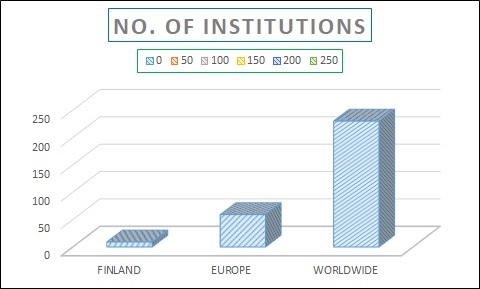
Figure 7: Comparison of no. of ophthalmology institutions in Finland, Europe region and Worldwide
Glance at Market of Advertising and Marketing:
Changing trends in diet and lifestyle as well as increased longevity are growing the market for ophthalmological treatments: the global ophthalmic device market is expected to reach $28 billion by 2016 exhibiting a 2.5% compound annual growth rate from 2009 to 2016, according to GBI Research.
“The worldwide ophthalmic products market exceeds $22 billion (US) and is growing at more than 10% per year. Without the inclusion of consumer eye care products, the ophthalmic products market is roughly a $17 billion market.” Rising of demand for ophthalmic devices and expanding healthcare coverage in emerging economies will increase sales to 2024. The medical device market of Europe is mainly comprised of medical equipments such as consumables, orthopaedic devices, dental devices, respiratory devices, and ophthalmic devices which are manufactured in Germany, France, the UK, Italy and Spain. The demand for medical devices has been growing owing to a mounting awareness for early diagnosis and treatment of countless disease states in European countries. The key countries that have contributed significantly to the Europe medical devices market during 2008-2013 include Germany, UK, Spain and France. Germany is one of the major European markets and it has been observed that the country contributes immensely to the exports of medical devices. The overall medical devices market in Europe is projected to reach EUR ~ million in 2018, augmenting at a CAGR of 3.9% during 2013-2018.
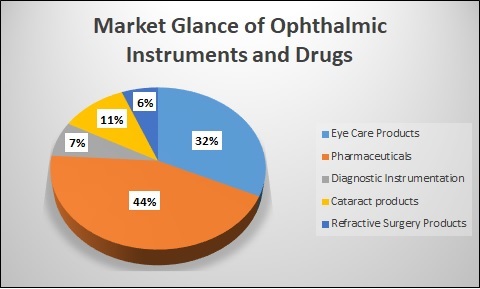
Figure 8: Market glance of Ophthalmic Instruments and Drugs

Figure 9: % of Job/Career Scope of Different Countries in Ophthalmology
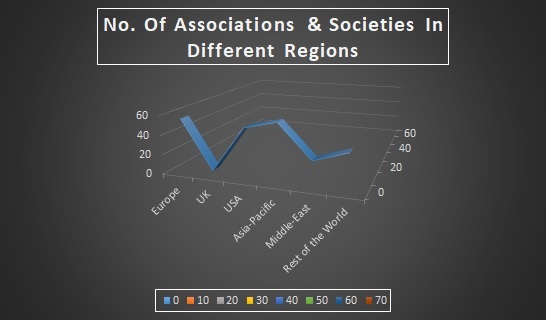
Figure 10: Number of Associations & Societies (Ophthalmology) in Different Region
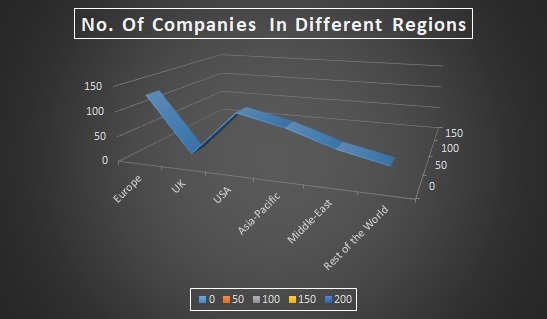
Figure 11: Number of Companies (Ophthalmology) in Different Region
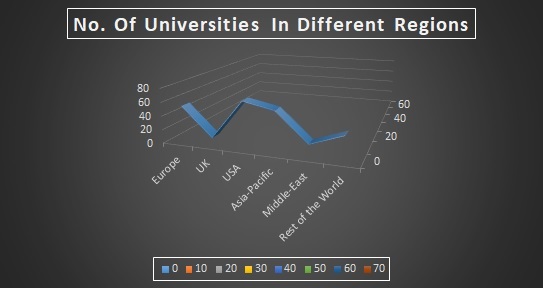
Figure 12: Number of Universities (Ophthalmology) in Different Region
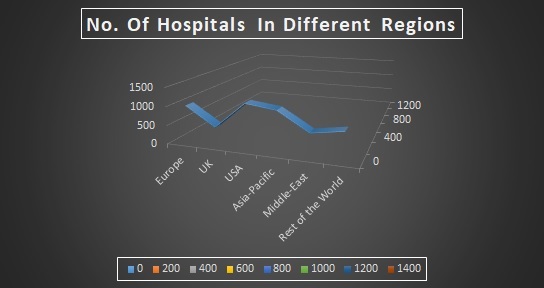
Figure 13: Number of Hospitals (Ophthalmology) in Different Region
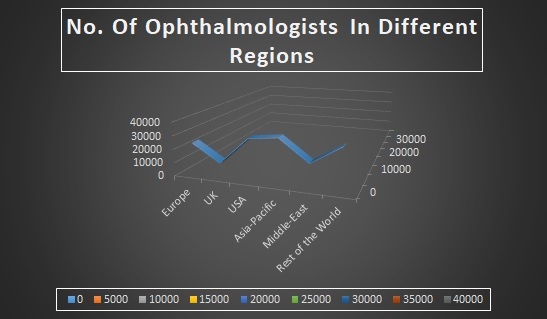
Figure 14: Number of Ophthalmologists in Different Region
Across all over the world, North America is the largest market for ophthalmology drugs and devices, followed by Europe and Asia. Asia-Pacific is an unsaturated market, especially China and India, and these regions are expected to drive the growth of the overall ophthalmology market due to growing awareness of eye diseases and increasing disposable income.
Figure 15: Comparison graph for no. of optometrists and no. of patients year wise
Worldwide markets using following geographic/economic categories: US, Western Europe, Japan, Other Wealthy Nations, China, India, Latin America, and Rest of the World. This report includes market data for 2017, and forecast market performance through 2022.
Figure 16: Comparison of Global Ophthalmic Market Revenue’s
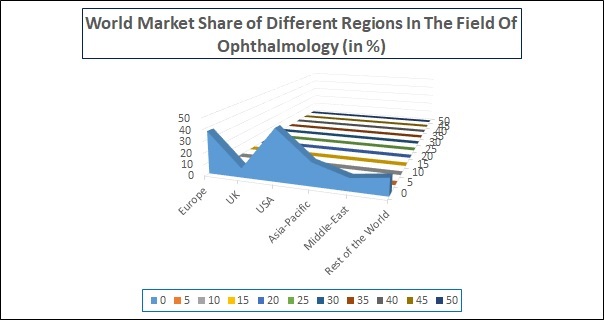
Figure 17: Comparison of World Market Share of different Regions in Ophthalmology
Figure 18: Future Projections of Ophthalmology
References:
http://www.icoph.org/ophthalmologists-worldwide.html
https://en.wikipedia.org/wiki/List_of_university_hospitals
http://ec.Europa.Eu/Regional_Policy/En/Funding/Social-Fund/
https://secure.Aao.Org/Aao/Rosters/State-Societies
http://www.Biomedresearches.Com/Root/Pages/Pharmaceutical_Info/Pharmaceutical_Manufacturers.Html
http://Webeye.Ophth.Uiowa.Edu/Eyeforum/.../Internationalophthalmology.Html
http://www.Whatclinic.Com/Eye-Clinics/Europe
http://www.Icoph.Org/Ophthalmologists-Worldwide.Html
http://www.Statisticbrain.Com/Cataract-Statistics/
http://Medical-Schools.Startclass.Com/D/B/Ophthalmology
http://Ophthalmologyschools.Com/Top_School_Rankings/Index.Html
http://www.Aubmc.Org.Lb/Patientcare/Dep_Div/Pages/Ophthalmology.Aspx
http://www.Aao.Org/Newsroom/Eye-Health-Statistics
https://www.Uihealthcare.Org/GME/Insidepages.Aspx?Id=226382&Taxid=225135
Conference Highlights
- Current Research Trends in Ophthalmology, Optometry and Glaucoma
- Retina, Cornea and Eye Disorders
- Ocular Microbiology, Immunology and Oncology
- Clinical Ophthalmology and Oculoplastic Surgery
- Pediatric Ophthalmology and Neuro Ophthalmology
- Ophthalmic Imaging and Instruments
- Novel Approaches for Ophthalmic Drug Delivery
- Optometry and Eye Care
- Cataract and Refractive Surgery
- Glaucoma and Vision Disorders
- Treatments and Medications of Glaucoma
- Traditional/Herbal Therapeutics in Ophthalmology
To share your views and research, please click here to register for the Conference.
To Collaborate Scientific Professionals around the World
| Conference Date | October 18-19, 2018 | ||
| Sponsors & Exhibitors |
|
||
| Speaker Opportunity Closed | |||
| Poster Opportunity Closed | Click Here to View | ||
Useful Links
Special Issues
All accepted abstracts will be published in respective Our International Journals.
- Journal of Clinical & Experimental Ophthalmology
- International Journal of Ophthalmic Pathology
- Optometry: Open Access
Abstracts will be provided with Digital Object Identifier by












